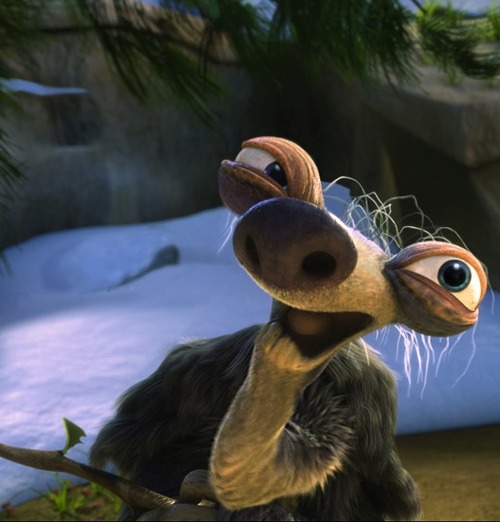

But not cut marks made from metal tools or not marks made from museum curators, but ones that were made by stone tools." "They're very, very clearly not tooth marks," he said. He took silicone molds of the marks and brought them back to his lab to examine in detail under a scanning electron microscope. Given that the bone was 700 years older than known human archeological sites for the "Clovis" people in that part of North America, Greenfield expected that the marks likely were made by animals. Greenfield's expertise is in figuring out whether scratches on ancient bones were caused by animals gnawing or clawing them, curators scraping them with modern tools, or the work of ancient humans. He wondered where they might have come from and turned to Greenfield for help. (Haskel Greenfield/University of Manitoba) The animals went extinct about 10,000 years ago. This giant ground sloth, displayed at the Manitoba Museum, was roughly the size of a modern rhinoceros.
Ice age sloth series#
Nearly a century later, it was examined by Brian Redmond, a curator at the Cleveland Museum of Natural History, who noticed a series of scratches on the bone.

The sloth femur, one of the largest ever found, was originally dug up from a peat bog in 1915. The bone represents some of the earliest evidence of human activity in North America. Although early North Americans were known to eat other animals, such as mammoths and giant beavers, this is the first evidence of humans eating or otherwise exploiting giant ground sloths, which went extinct at the end of the last ice age about 10,000 years ago, Greenfield said in an interview Thursday. The massive femur or thigh bone of a 1,300-kilogram ground sloth that lived 13,500 years ago in the tundra of what is now Ohio bears the telltale scars of ancient human stone "cutlery," said the study published in the journal World Archaeology by University of Manitoba anthropologist and archeologist Haskel Greenfield and three American scientists. A rhino-sized sloth was likely once part of a supersized meal for ice age humans living just south of the current U.S.-Canadian border, a Manitoba scientist has discovered.


 0 kommentar(er)
0 kommentar(er)
